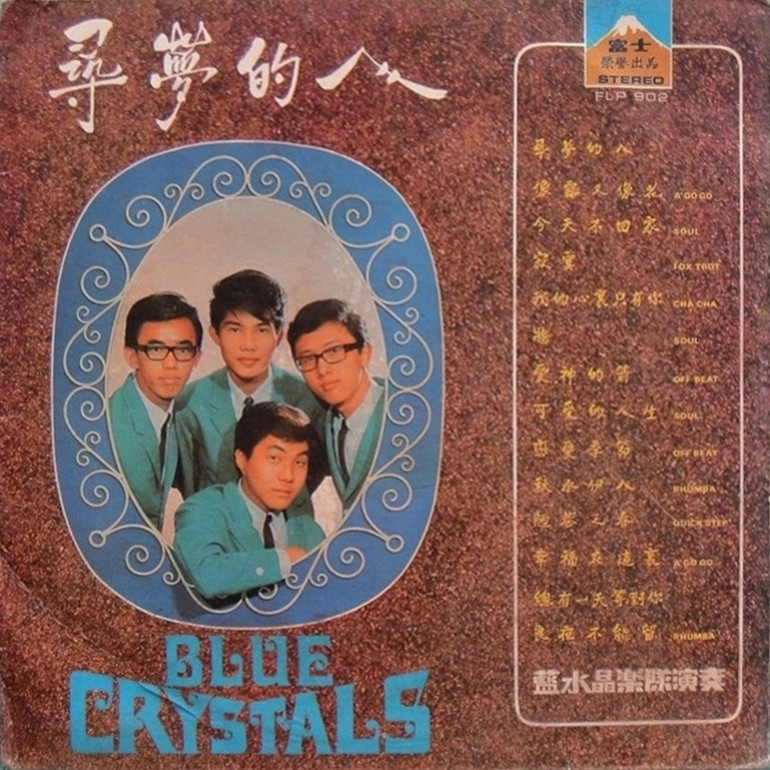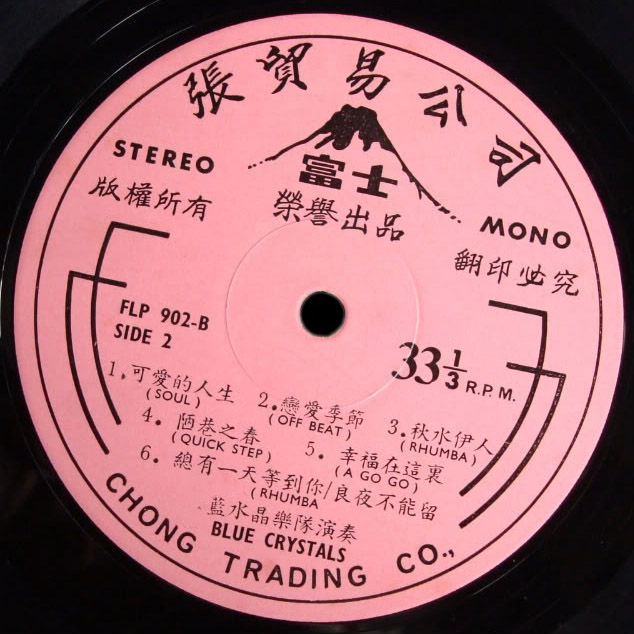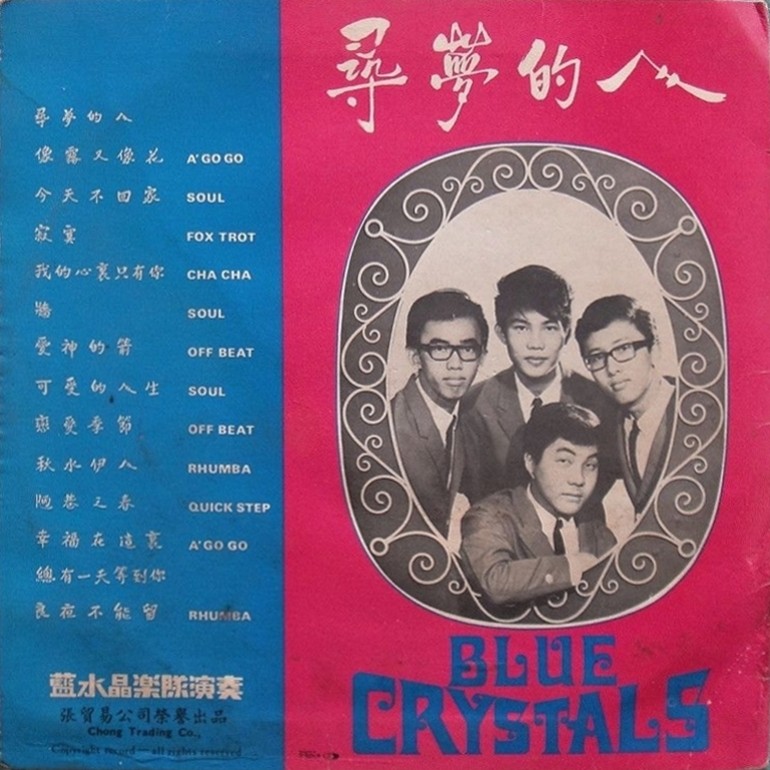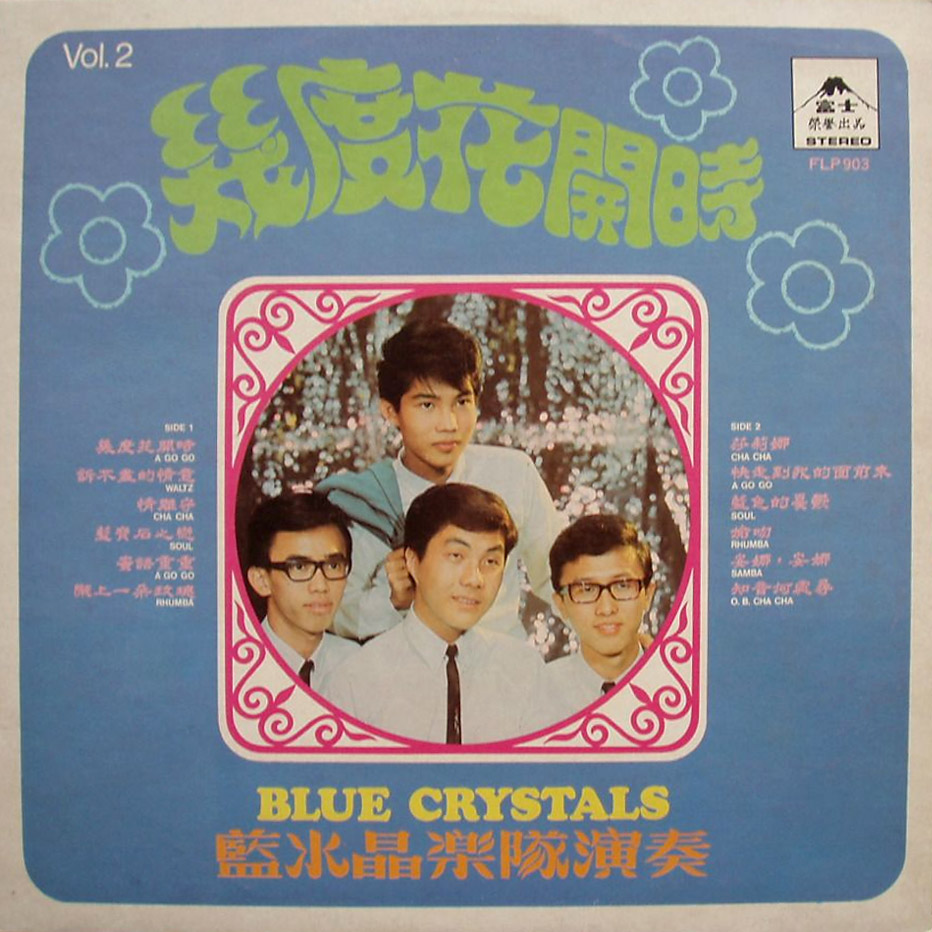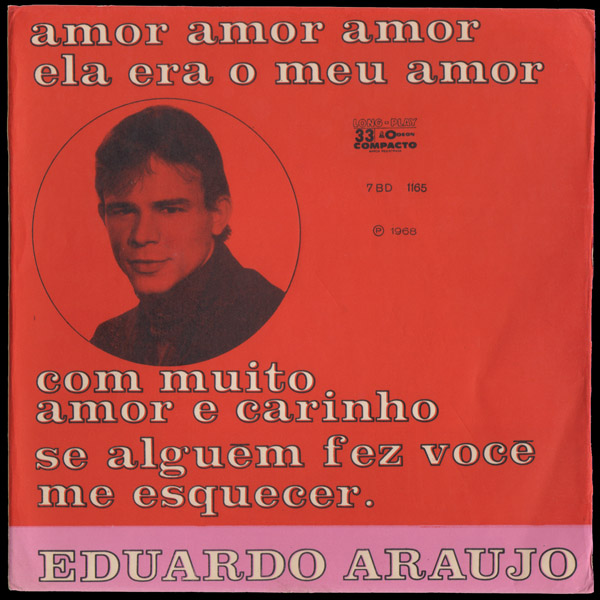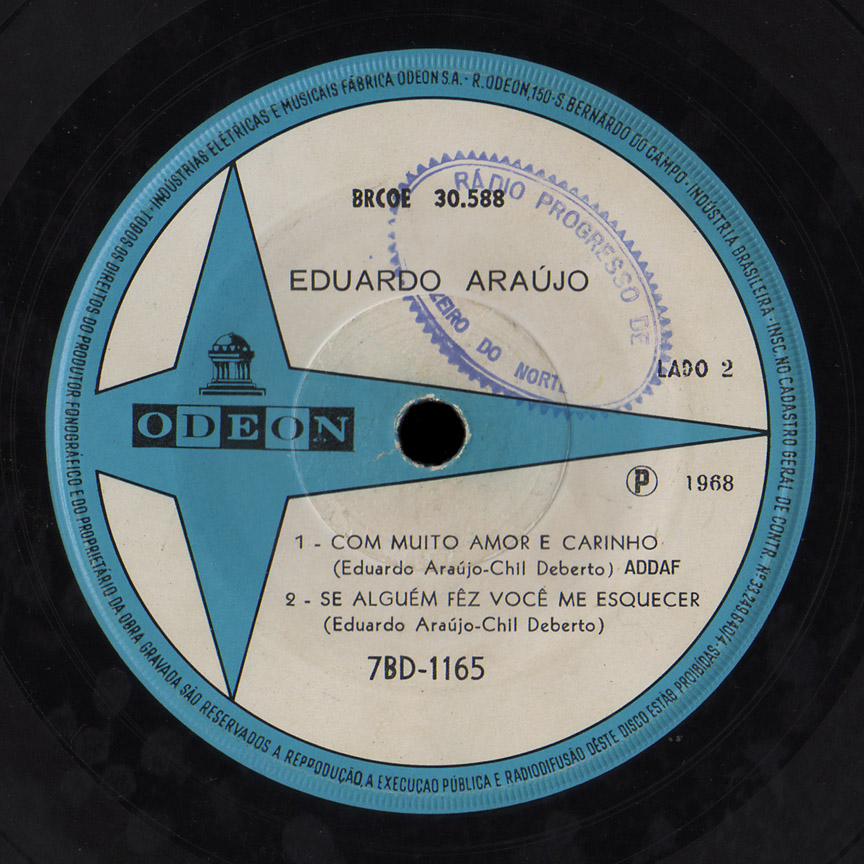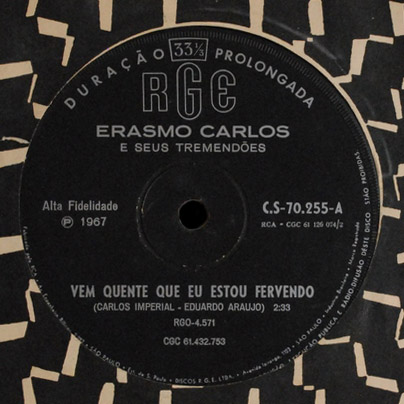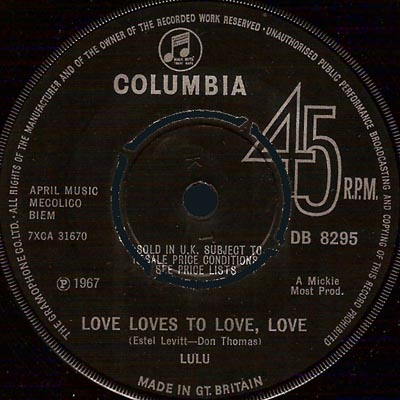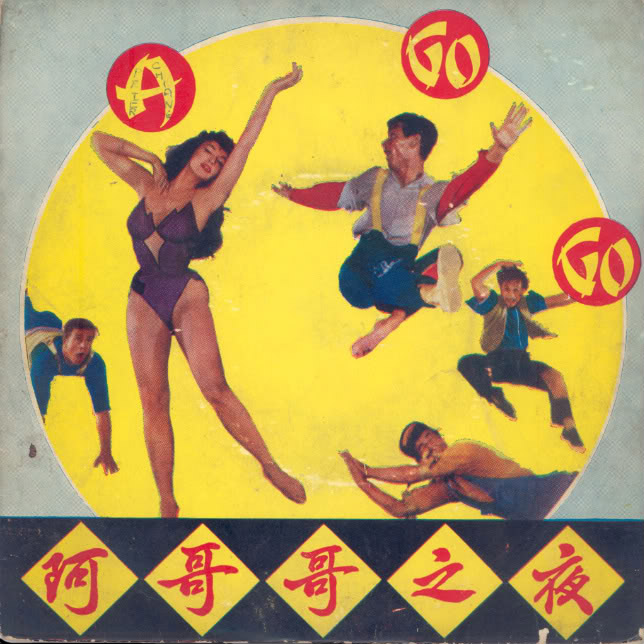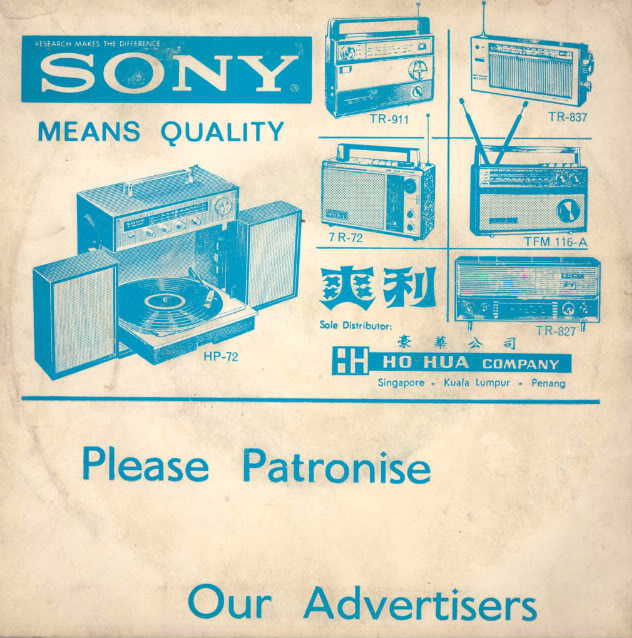
Larry Tamblyn (keyboards, vocals)
Tony Valentino (lead guitar)
Gary Lane (bass)
Gary Leeds (drums)
1962
The group is formed in Los Angeles by Larry Tamblyn (b. February 5, 1943, Inglewood, California, US), (brother of actor Russ Tamblyn), and guitarist Tony Valentino (b. Emilio Tony Belilissimo, May 24, 1941, Longi, Italy), who arrived in the US in 1958. Tamblyn has previously recorded three singles for local label, Faro.
Tamblyn and Valentino form the original Standells with Jody Rich (bass) and Benny King (drums) and work in Hawaii at the Oasis club in Honolulu for several months. The group takes its name from the long hours spent hanging around record company offices awaiting an audition.
1963
January The Standells work at the Club Esquire in Eureka, California. Soon afterwards, former New York Aerospace Technology school student, Gary Leeds (b. September 3, 1944, Glendale, California, US) and bass player Gary Lane (b. Gary McMillan, September 18, 1940, St Paul, Minnesota, US) take over from King and Rich. The group’s first recording is the single, “The Shake”, which receives airplay on KFWB radio station.
May The group plays at the Royal Room in West Los Angeles.
August The Standells appear at Tykes in Pasadena, California.
September The band performs at the Trophy Room in Sacramento, California and then becomes the house band at the Peppermint West in Hollywood.
December The Standells’ debut single, “You’ll Be Mine Some Day” is released as Larry Tamblyn and The Standells on Faro’s subsidiary label, Linda Records.
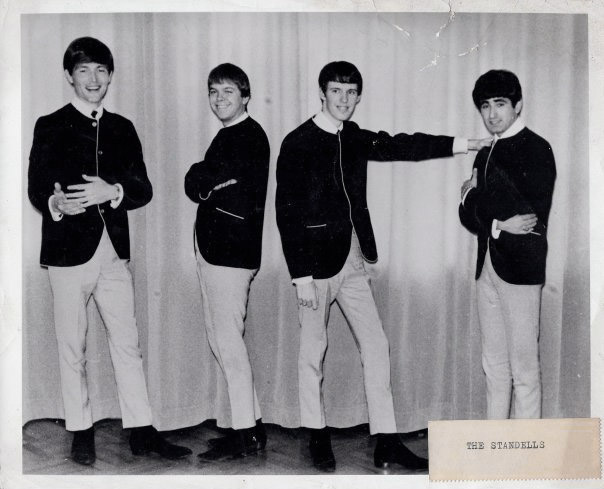
February (6) Tamblyn, Valentino, Lane and Leeds sign a record contract with Liberty Records.
March The group plays at the Thunderbird Lounge in Las Vegas billed as America’s answer to The Beatles.
May Gary Leeds leaves to join first Johnny Rivers and then P.J. Proby, before co-founding The Walker Brothers, and is replaced by Dick Dodd (b. October 27, 1943, Hermosa Beach, California, US) from surf band, Eddie & The Showmen. (Dodd has also been an original mouseketeer on the popular TV show, The Mickey Mouse Club).
June The Standells land a residency at Hollywood’s illustrious nightclub, PJ’s (where they record an album) and also play at the Haunted House on Hollywood Boulevard. Liberty releases the single, “Peppermint Beatle”, in an attempt to cash-in on The Beatles’ recent US success, but the single flops.
July A cover of James Brown’s “I’ll Go Crazy” is lifted from the forthcoming album and issued as a single but fails to chart. In The UK, b-side, “Help Yourself” is released as the single.
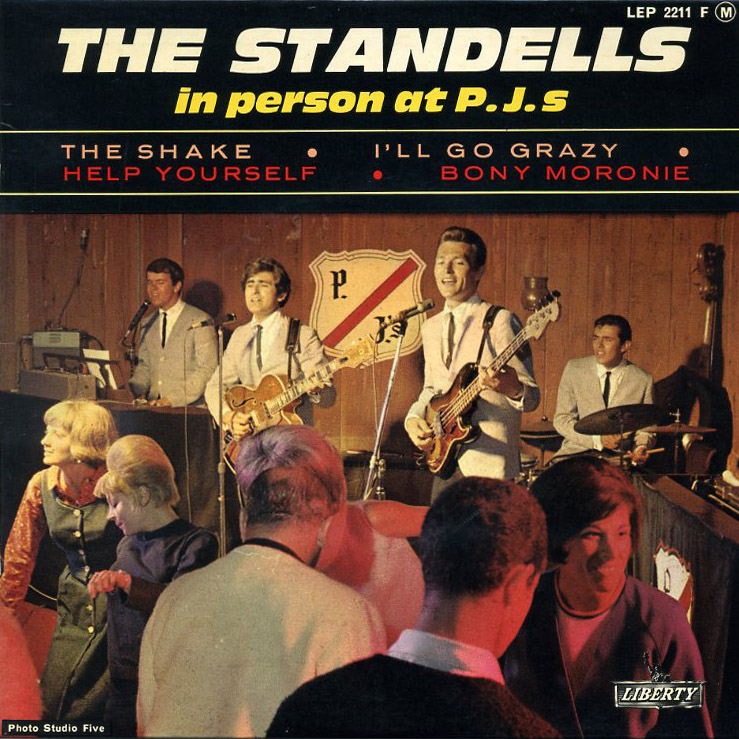
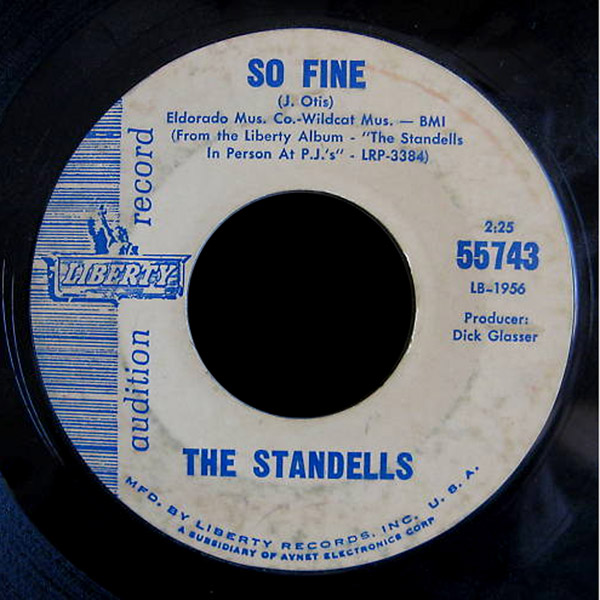 September Liberty releases debut album, The Standells In Person At PJ’s, a blatant cash-in on The Kingsmen’s recent live album, Louie Louie: The Kingsmen In Person. The record is released in the UK the following year; the only Standells album to be issued there. The Standells travel to Nicaragua for 12 days.
September Liberty releases debut album, The Standells In Person At PJ’s, a blatant cash-in on The Kingsmen’s recent live album, Louie Louie: The Kingsmen In Person. The record is released in the UK the following year; the only Standells album to be issued there. The Standells travel to Nicaragua for 12 days.
October (17) A final Liberty single, a version of Johnny Otis’ “So Fine” is taken from the album but does not chart. The band signs a new deal with VJ Records.
December (5) The Standells perform at Sammy Lee’s Westlake in Chatworth, California.
(22) The band makes its third return to P J’s in Hollywood.
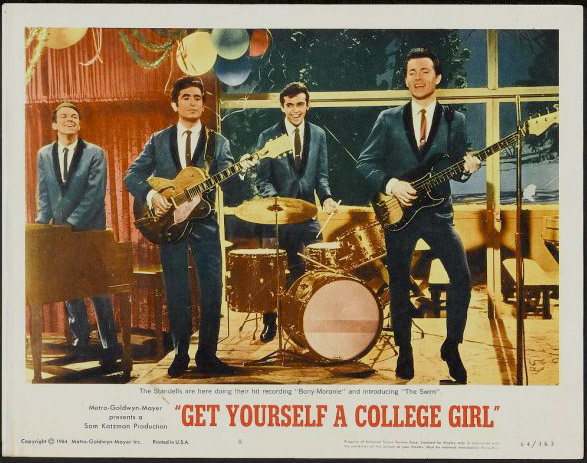
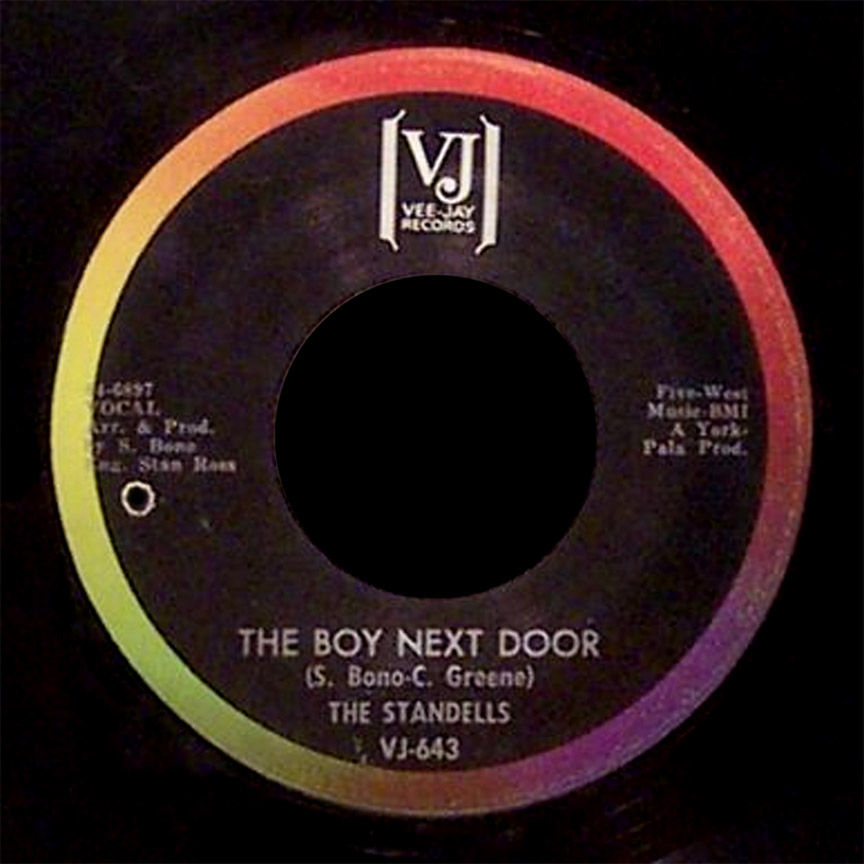 (26) Having signed a new recording deal with Vee-Jay Records, the band’s debut single for the label, “The Boy Next Door”, produced by Sonny Bono and featuring Cher on backing vocals, is released and eventually peaks at US #102. The single’s release comes on the heels of MGM film, “Get Yourself A College Girl”, where the band performs covers of “Bony Moronie” and “The Swim”.
(26) Having signed a new recording deal with Vee-Jay Records, the band’s debut single for the label, “The Boy Next Door”, produced by Sonny Bono and featuring Cher on backing vocals, is released and eventually peaks at US #102. The single’s release comes on the heels of MGM film, “Get Yourself A College Girl”, where the band performs covers of “Bony Moronie” and “The Swim”.
(31) The Standells appear on That Regis Philbin Show and perform a cover of The Beatles’ “I Want To Hold Your Hand” and one other song.

1965
January (7) The Standells open New Tiger A-Go-Go Room in the Hilton Hotel, San Francisco.
(18) “Zebra In The Kitchen” is released as a single by MGM but is not a success.
March (18) The Standells appear in episode “Far Out Munsters” for the popular TV programme, The Munsters. After the initial success of “Help Yourself” as a single in Los Angeles, Dodd become the group’s principal lead singer.
(20) The band appears on American Bandstand with Brenda Holloway.
(25) The group appears on Shindig with Dick and Dee Dee, Shirley Ellis, Bobby Goldsboro, The Trade Winds and Glen Campbell.
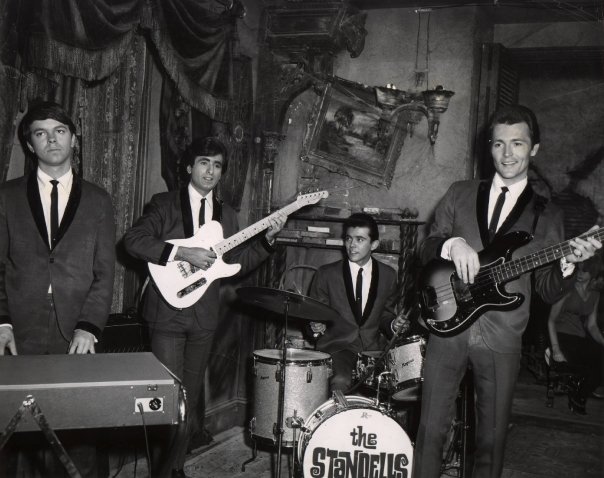
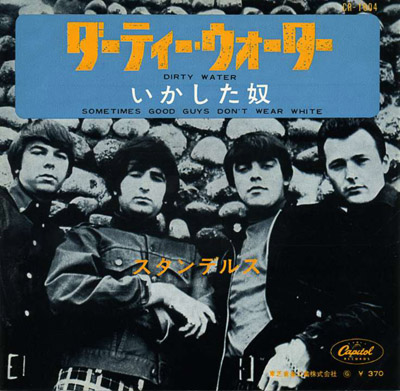
April The Standells return to the Tiger-A-Go-Go at San Francisco Hilton Hotel where they are advertised as the “return of the Wild Standells”.
May (28) The band plays at the Gardon Grove’s Alamitos Intermediate School assembly.
July (12) The Standells appear on Hollywood Discotechque TV show.
August Final Vee-Jay single, “Don’t Say Goodbye”, backed by “Big Boss Man” is released but fails to chart.
October The band is introduced to Ed Cobb, a former member of fifties vocal group, The Four Preps, who is currently working as a freelance producer and songwriter. Cobb is looking for a group to record one of his recent compositions, “Dirty Water”; a song written about a recent experience he had fighting off muggers, while walking with his girlfriend along the River Charles in Boston. He is suitably impressed with The Standells to use them on the track and offers his services to the group as a manager/producer. Shortly after, Cobb is approached by Tower Records (a subsidiary of Capitol), who are eager to obtain a record he has produced for Ketty Lester. Cobb proposes a deal, whereby Tower agree to sign The Standells in return for the Lester single.
November “Dirty Water” is released as a single but is slow to sell. Dodd, who apparently hates the song, leaves the group and is replaced by former Sir Raleigh & The Cupons, drummer/vocalist, Dewey Martin (b. Dewayne Midkiff, September 30, 1940, Chesterville, Ontario, Canada; d. 31 January 2009). The group records a version of “Why Did You Hurt Me” with Martin on lead vocal but it is re-recorded when Dodd rejoins the band a few months later.
December (5) The Standells perform at the Tiger-A-Go-Go in San Mateo, California.
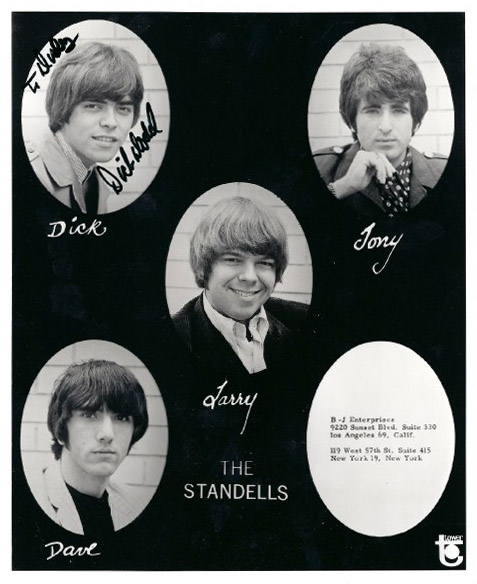
1966
February Dodd rejoins the band while they are working San Jose (and after Cobb arranges a summer tour supporting The Rolling Stones). Martin, meanwhile, leaves to join The Dillards, before gaining greater acclaim with The Buffalo Springfield.
May Bass player Gary Lane leaves the band during its first concert tour and is replaced in Florida by former member of the Tropics, Choir and Rush, Dave Burke.
(20) The Standells appear at Birmingham High School, Van Nuys with The Jefferson Airplane, The Doors, The Sunshine Company and The Nitty Gritty Dirt Band.
(20) The Standells perform “Dirty Water”, “There’s a Storm Comin'” and “Hey Joe” on the Mike Douglas Show.
June (11) After a long climb “Dirty Water” breaks into the US charts at #31, the group’s biggest hit to date. Liberty Records, exploiting the success of “Dirty Water”, reissues The Standells’ debut album as Live And Out Of Sight, adding the “Peppermint Beatles” single to the track listing. A single, “Ooh Poo Pah Doo” is also issued, to tie in with the album’s release. Second Tower single, Cobb’s “Sometimes Good Guys Don’t Wear White”, reaches US #43, while debut Tower album, Dirty Water hits #52.
(24) The Standells supports The Rolling Stones at the Manning Bowl, Lynn, Massachusetts on the opening date of The Stones’ US tour. Also on the bill is The McCoys and The Tradewinds. The crowd is subdued with tear gas, and the concert (even though it goes ahead) will be the last to be held at the venue until 1985.
July “Dirty Water” is The Standells’ second and final single to be released in the UK, but doesn’t chart.
(9) “Dirty Water” peaks at US #11, the band’s biggest hit.
(22) The Standells open with The McCoys and other acts for The Rolling Stones at the Memorial Auditorium, Sacramento, California.
(25) The group supports The Rolling Stones at The Hollywood Bowl alongside The Buffalo Springfield, The McCoys and The Trade Winds.
August “Ooh Poo Pah Doo” is lifted from the earlier live album and released on Sunset but is not a chart success.
September Second album, Why Pick On Me – Sometimes Good Guys Don’t Wear White is released but doesn’t chart.
November Third album in six months, Hot Ones which is entirely comprised of covers of recent hits like The Lovin’ Spoonful’s “Summer In The City” and The Beatles’ “Eleanor Rigby” is released but is not a success. Burke leaves, later to join San Francisco band Indian Puddin’ and Pipe [note: it may have been a different Dave Burke who joined Indian Puddin’ & Pipe and West Coast Natural Gas] and is replaced by John Fleck (b. Johnny Fleckenstein, US), who had been an original member of Love, co-writing “Can’t Explain” on that band’s debut album.
(26) Cobb’s “Why Pick On Me?” stalls at US #54.

1967
February The first single to feature Fleck on bass is “Try It”, arguably The Standells’ finest record. However, despite becoming an immediate hit in L.A., the record is soon banned by radio stations at the direction of rightwing moral majority radio mogul Gordon McLendon who argues that “Try It” is a blatant request for teenage girls to lose their virginity.
(7-12) The band plays at the Ice House in Glendale, California.
March The group releases the novelty tune, “Don’t Tell Me What To Do” under the name The Sllednats (The Standells backwards), but the single flops.
(25) Valentino and Fleck’s “Riot On Sunset Strip” hits US #133.
April Cobb is commissioned by Tower to come up with a soundtrack for a teenage protest film revolving around the disturbances on Sunset Strip 1966/67. The band is featured in the film, alongside label mates, The Chocolate Watchband.
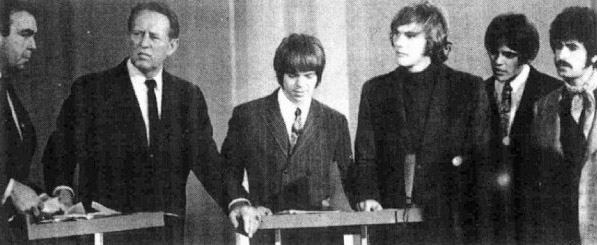
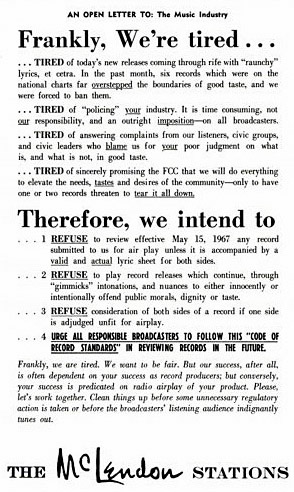 May (27) The Standellls appear on Art Linkletter’s TV show, Let’s Talk, debating radio mogul Gordon McLendon, who has been leading the campaign to ban music with “objectionable” lyrics. The Standells handily defeat him. However, after creative editing, it appears the debate was more evenly matched.
May (27) The Standellls appear on Art Linkletter’s TV show, Let’s Talk, debating radio mogul Gordon McLendon, who has been leading the campaign to ban music with “objectionable” lyrics. The Standells handily defeat him. However, after creative editing, it appears the debate was more evenly matched.
July (5) The Standells support The Doors and The Coasters at Lowell High School Auditorium, La Habra, California.
(23) The group appears on the Shebang TV show with Brenton Wood.
August (26) – September (4) The band performs at the ‘Fort Worth Teen Fair & Mardi Gras Festival’, the Will Rogers Exhibit Building, Fort Worth, Texas.
(5-12) The Standells play at the Ice House in Glendale.
October The Standells’ next release, the R&B/soul single, “Can’t Help But Love You” is a minor hit, peaking at US #78. Tower releases The Standells’ fourth and final album Try It, which doesn’t sell.
November (7) The group appears on the TV show Groovy with The Sunshine Company.
(9) The Standells make a TV appearance on Pat Boone in Hollywood.
December The group appears on the Joey Bishop Show.
(8-9) The Standells perform at the Cheetah, Venice, California with The Hour Glass.
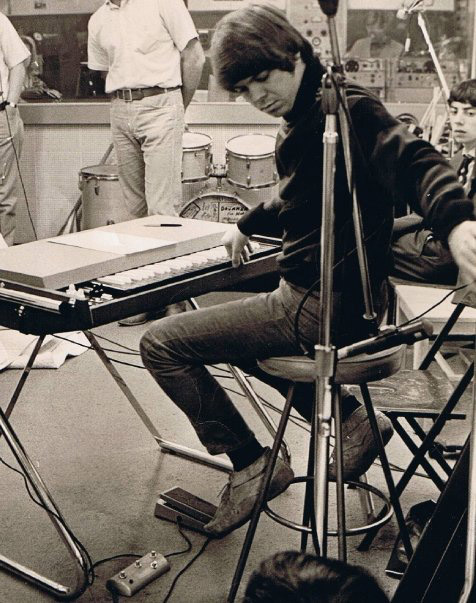
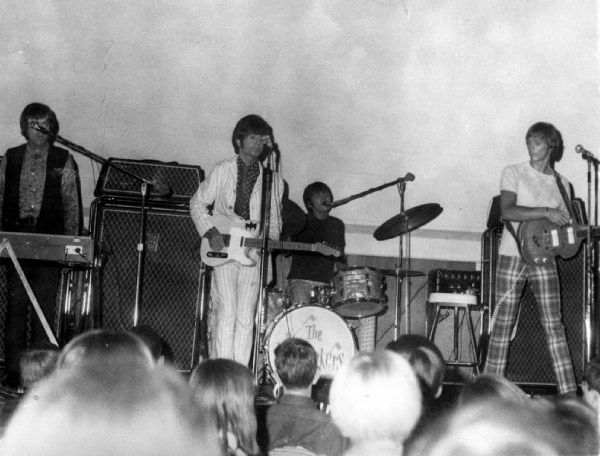
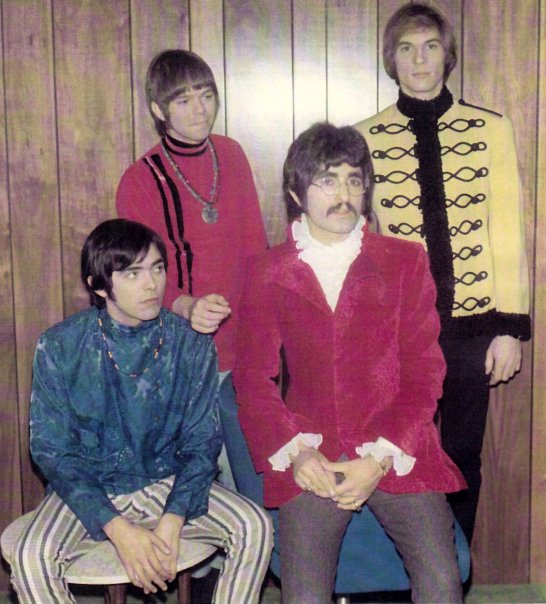
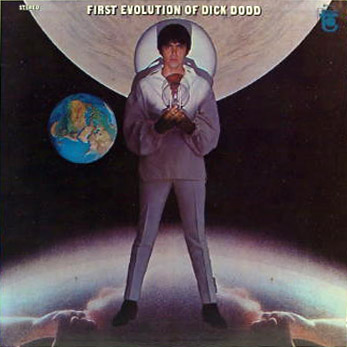
1968
January (9-14) The Standells are billed to appear at the Ice House in Glendale, California but the shows are postponed until after playing at the Guitar Center in February.
February (10) The group plays at the Guitar Center in Hollywood, California.
April The band is eager to write and perform its own material and decides to split from Cobb, who continues to work with The Chocolate Watchband. Cobb is offered another film commission and decides to record Dodd as a solo artist without the rest of the group. Dodd records “Guilty” for the film, Square Root but problems arise over its distribution and the single flops.
(9-14) The Standells return to the Ice House in Glendale for further shows.
(19) The group plays at Bakersfield College, Bakersfield, California with The Illinois Speed Press.
May Dodd joins Green Grass Productions as a solo artist. His place is taken by drummer Bill Daffern.
June A final single, “Animal Girl” is released but is poorly received, despite being one of the group’s finest records. Featuring Tower producer Richie Podolor on sitar, and recorded before Dodd’s departure, the record is a radical departure in sound for the band and is lost in the media rush which follows.
July A Larry Tamblyn’s solo single, the instrumental “Summer Clothes (Parts 1 &2)”, is released on the small Sunburst label. The one-year old track was recorded around the same time as “Can’t Help But Love You”. Dodd’s first solo single “Little Sister’ is released but fails to chart.
August Fleck also drops out and moves into film work. He later becomes a top cinematographer with Jaws among his credits. The Standells recruit ex-Factory lead vocalist and guitarist Lowell George (b. April 13, 1945, Hollywood, California, US), but no recordings are made.
September (3-15) The new line-up begins a series of dates at the Ice House, Glendale, California with Pipe Dream but they are never completed due to differences between Tamblyn and George.
October Tower releases Dodd’s solo album, The First Evolution Of Dick Dodd but it doesn’t chart.
(27) The Standells appear at the Artists and Models Ball at the Century Plaza with Taj Mahal and others.
November George leaves to join Frank Zappa’s Mothers Of Invention (and later Little Feat).
December Dodd’s final single “Fanny” is another chart failure and he quits the music business for the next few years.
(7) A new version of The Standells supports Johnny Rivers at the College of Sante Fe with Blue Marble Faun in Sante Fe. Daffern and Tamblyn contribute material to The Electric Prunes’ final album, Just Good Old Rock and Roll.
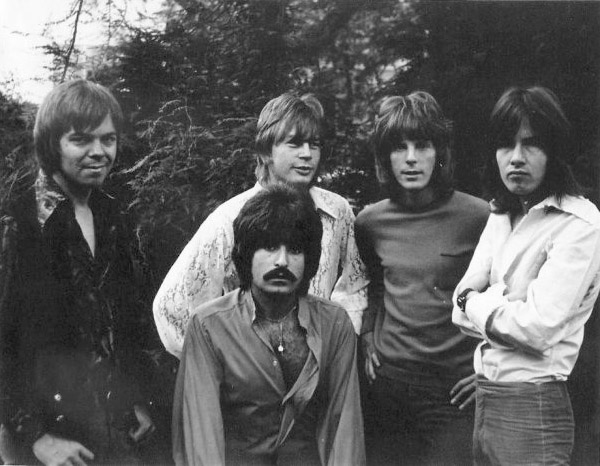
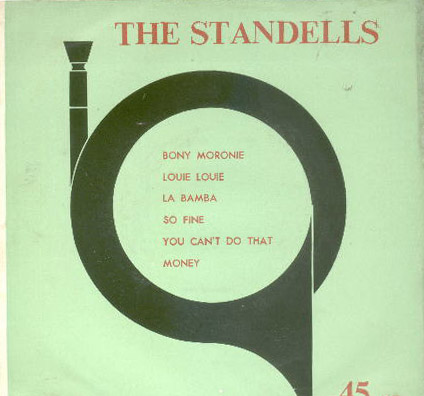
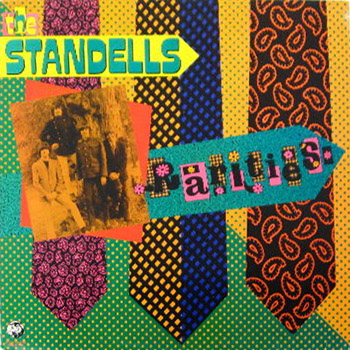
1969
Tamblyn and Daffern form Chakras with former Knack members Michael Kaplan and Larry Gould with Valentino acting as manager. Reprise releases the Charkras single, “City Buy” c/w “Agnes Vandalism”, both sides of which are written by Michael Kaplan. Daffern leaves and subsequently records with Hunger! and later records with Truk. Tamblyn and Valentino then reform The Standells with English guitarist Paul Downing.
November (14-16) Billed as The Standells, the group appears at Pier 7 in Van Nuys, California. A photo circa this time includes new members Bill Daffern (Willie Dee) and Tim Smyser.
1970
July (7-12) The Standells play at the Beach House, California.
September Dodd releases the single “Requim: 820 Latham”.
1975
Dodd emerges with Los Angeles group, Joshua, who release an album Willy And The Hand Jive (produced by Ed Cobb) for the independent AVI label.
1982
American indie label Rhino Records releases compilation album The Best Of The Standells. Around the same time Valentino cuts a number of solo demos (but is unable to attract a record deal), before joining Tamblyn and Dodd in a full-scale Standells reunion.
1983
August The Standells perform at the Club Lingerie in Hollywood, the Golden Bear in Huntington Beach, a weeklong engagement at Harrah’s in Reno, Nevada, supported by The Fleshtones.
1984
Rhino Records issues second album, Rarities, a collection of rare Standells tracks, including Dodd’s solo releases and the band’s pre-Tower Vee-Jay singles.
1986
Third Rhino release The Best Of The Standells is issued.
July (19-20) The Standells appear at the Summerfest/Return to the Sixties at Glen Helen Regional Park, San Bernandino, California. Tamblyn, Valentino and Dodd reunite in 1999 for the Cavestomp Festival in New York. The group records a live CD, Ban THIS, a slam at Gordon McLendon.
2000
Gary Lane rejoins The Standells as they perform at the Las Vegas Grind, Las Vegas, Nevada.
2004
The Tamblyn/Valentino/Dodd/Lane line up play before the Game Two of the World Series.
2005
April (11) The Standells appear at Fenway Park. The band will return the following year for a show on September 8.
Many thanks to Larry Tamblyn for his personal contributions.
Sources:
Bronson, Harold. Sleeve notes to Rhino album, The Best Of The Standells.
Burgess, Chuck and Nowlin, Bill. Love That Dirty Water! The Standells and The Improbable Red Sox Victory Anthem, Rounder Books, 2007.
Doggett, Peter. ‘The Standells’. Record Collector, May 1991, #141.
Grushkin, Paul D. Art Of Rock – Posters From Presley To Punk, Artabras, Cross River Press, Ltd, 1987.
Hogg, Brian. ‘Little Feat’. Strange Things Are Happening, Vol 1, #3, July/August 1988.
Joynson, Vernon. Fuzz, Acid And Flowers, Borderline Productions, 1993.
Maclean, Hugh and Joynson, Vernon. An American Rock History – California The Golden State, Borderline Productions, 1985.
Rees, Dafydd and Crampton, Luke. Book Of Rock Stars, 2nd Edition, Guinness Publications, 1994
Robertson, John. Neil Young – The Visual Documentary, Omnibus Press, 1994.
Shaw, Greg. The Doors On The Road, Omnibus Press, 1997, pages 46 and 57.
Whitburn, Joel. Billboard – USA Top 40 Hits, 3rd Edition, Guinness Publications, 1987.
Whitburn, Joel. Joel Whitburn’s Pop Annual 1955-1994, Billboard Record Research Inc, 1995.
Billboard, May 11, 1968, page 50.
Billboard, September 7, 1968, page 3.
Variety, September 2, 1970, page 60.
Another great resource is: www.newspaperarchive.com/
Some of the scans and photos seen here are on the Standells Facebook page. from the collections of Larry Tamblyn, Thomas Haaland and others.
Copyright © Nick Warburton. All Rights Reserved. No part of this article may be reproduced or transmitted in any from or by any means, without prior permission from the author.
Email: Warchive@aol.com

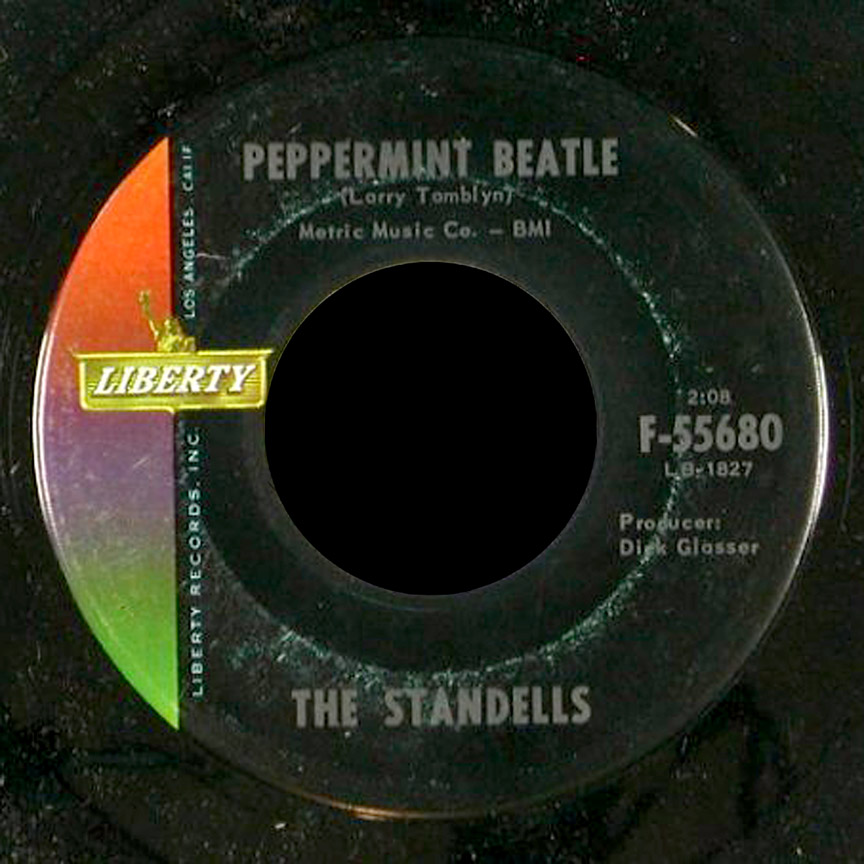

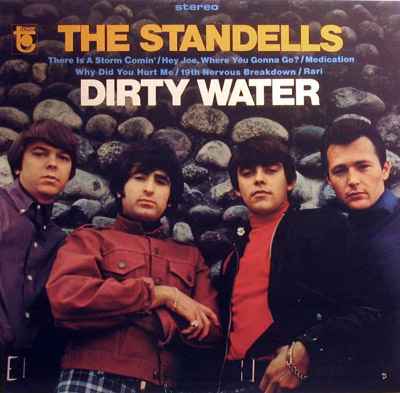

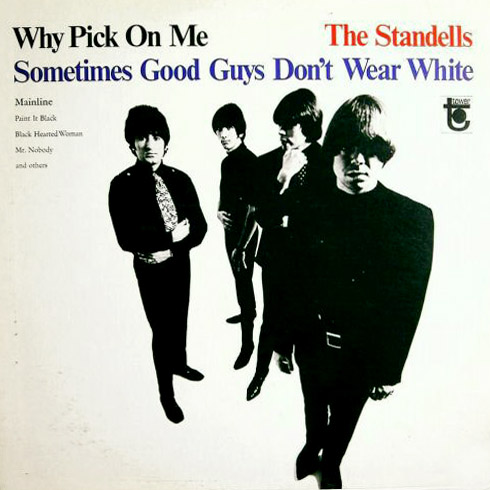
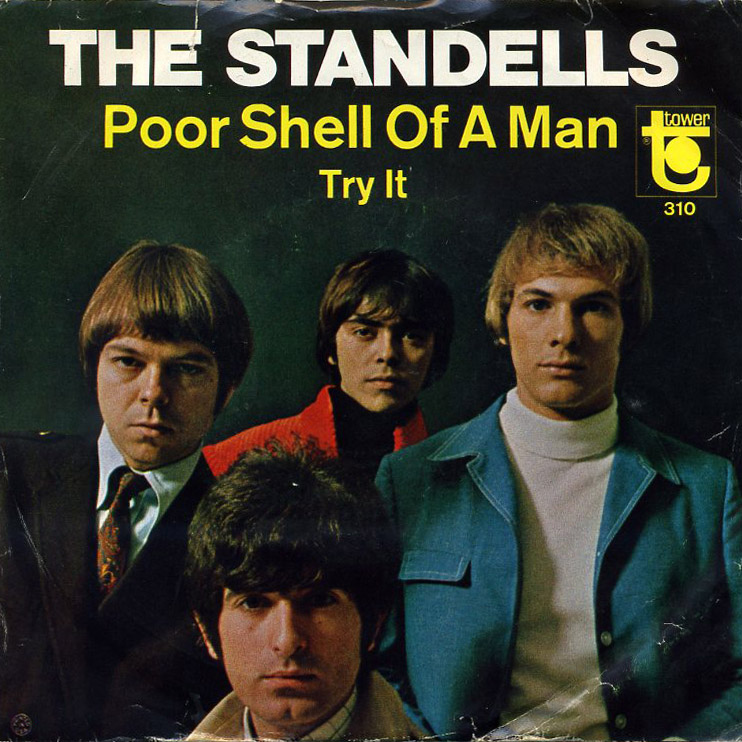
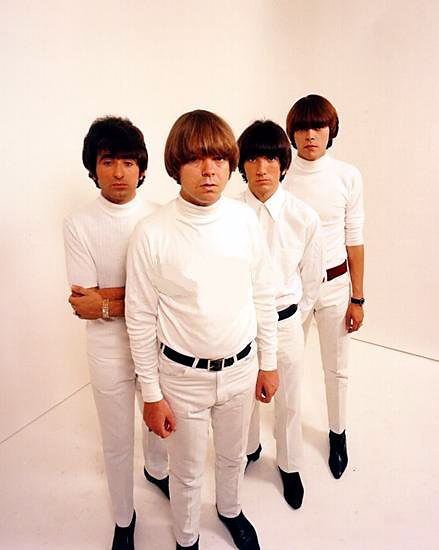
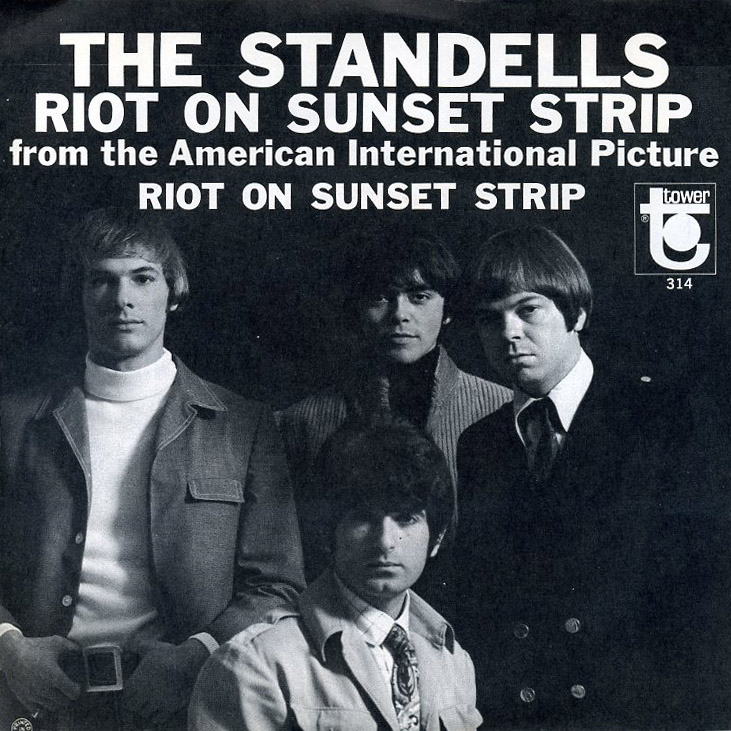
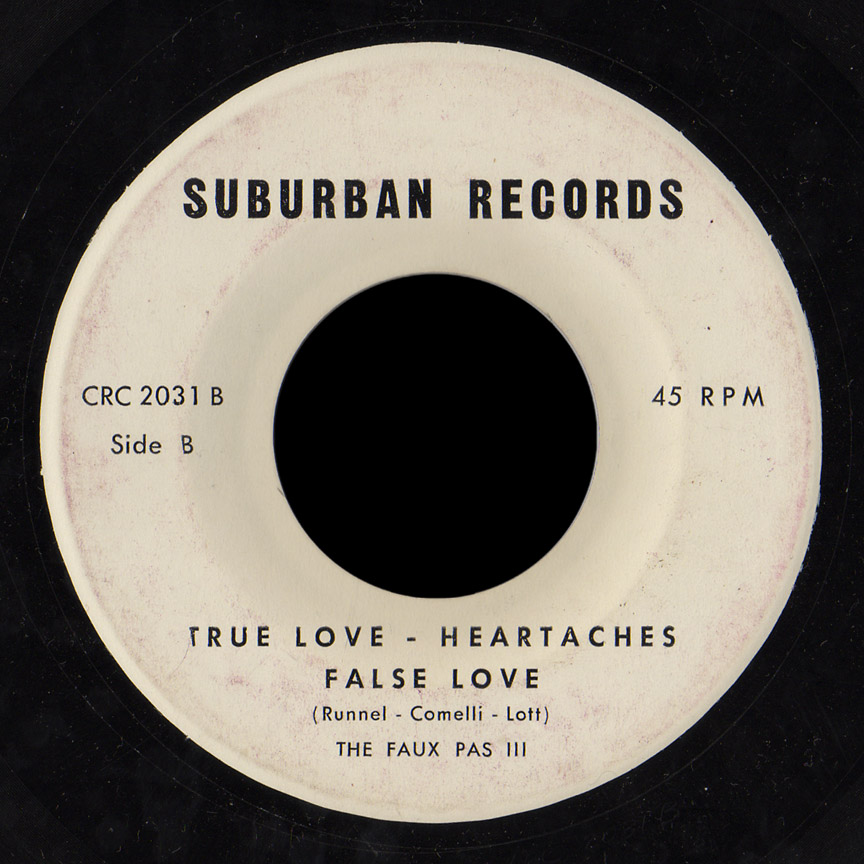
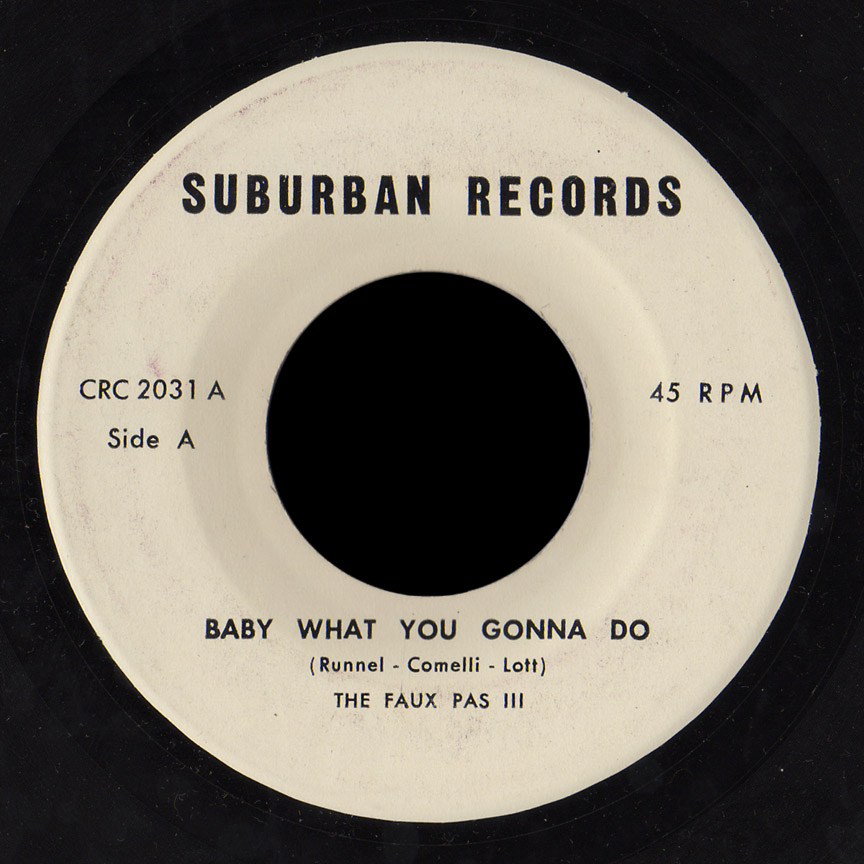
 Given Bobby Runnel’s career as a lounge act during the mid-late ’60s, you’d think it unlikely that one of his songs could become something of a classic of mid-60s rock. His original song “True Love – Heartaches” has been a favorite of mine since hearing it on Teenage Shutdown vol. 11. He certainly must have believed in the song, as he recorded it three times in as many years.
Given Bobby Runnel’s career as a lounge act during the mid-late ’60s, you’d think it unlikely that one of his songs could become something of a classic of mid-60s rock. His original song “True Love – Heartaches” has been a favorite of mine since hearing it on Teenage Shutdown vol. 11. He certainly must have believed in the song, as he recorded it three times in as many years. I recently heard a clip of this first version of “True Love – Heartaches – False Love” and it’s pretty cool, slower with piano as prominent as the guitar and good drumming. If anyone has sound transfers or label scans please email me.
I recently heard a clip of this first version of “True Love – Heartaches – False Love” and it’s pretty cool, slower with piano as prominent as the guitar and good drumming. If anyone has sound transfers or label scans please email me.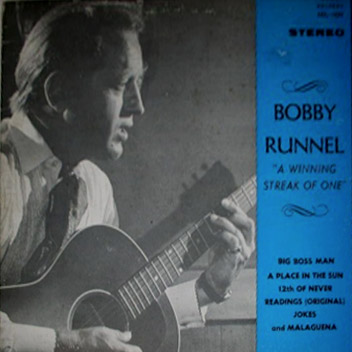 In January 1968 he released the third and best version of “True Love – Heartaches”, recorded at Akron Recording and released on his own Faux Pas label (a Rite pressing: 21131/21132 with black labels). The A-side this time was a cover of “Black Cloud”, a hit for Me and Dem Guys on Palmer from late 1966. It’s a song I’m not very fond of but the Faux Pas do a great job, especially the drummer who lays down a beat like a locomotive. Whatever the limitations of their lounge act, this band could rock when it wanted to.
In January 1968 he released the third and best version of “True Love – Heartaches”, recorded at Akron Recording and released on his own Faux Pas label (a Rite pressing: 21131/21132 with black labels). The A-side this time was a cover of “Black Cloud”, a hit for Me and Dem Guys on Palmer from late 1966. It’s a song I’m not very fond of but the Faux Pas do a great job, especially the drummer who lays down a beat like a locomotive. Whatever the limitations of their lounge act, this band could rock when it wanted to.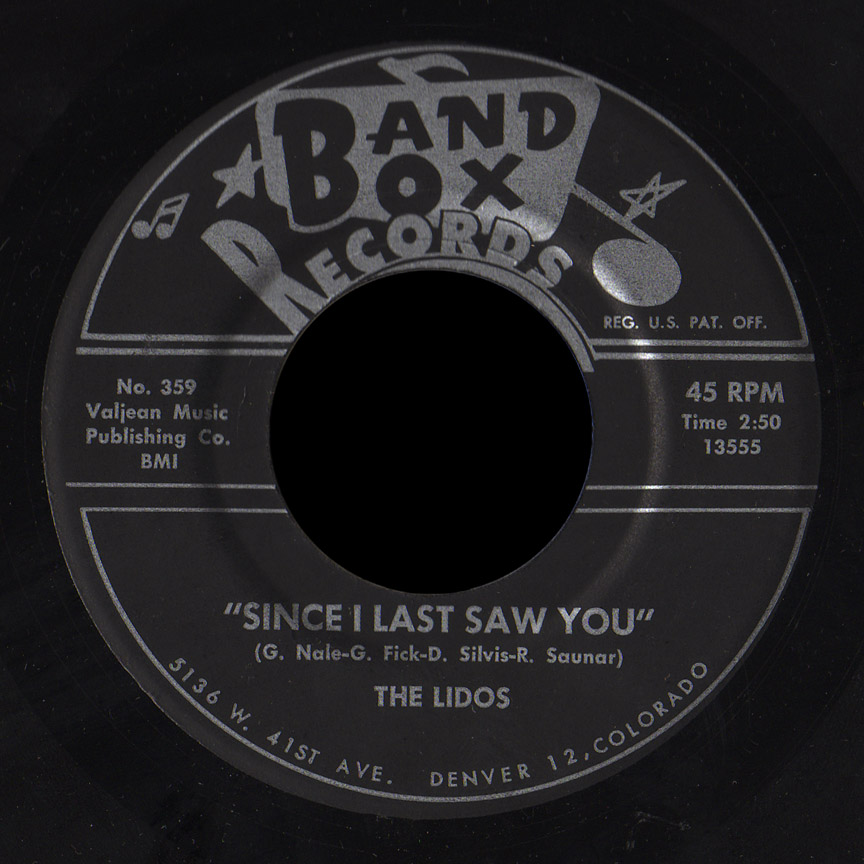
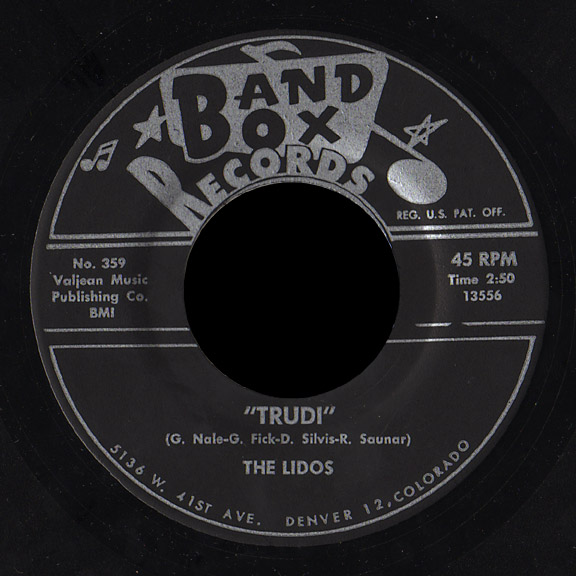 The chorus of serenaders on “Trudi” turns it into a parody of the doo-wop style. The band must have been disappointed in the absolutely crappy fidelity they got out of the Band Box studio, even though that cloudy sound is part of the charm of “Since I Last Saw You”. However, I do like the intense decay on the last chord of “Trudi” – so, you have one reason to take a listen to it.
The chorus of serenaders on “Trudi” turns it into a parody of the doo-wop style. The band must have been disappointed in the absolutely crappy fidelity they got out of the Band Box studio, even though that cloudy sound is part of the charm of “Since I Last Saw You”. However, I do like the intense decay on the last chord of “Trudi” – so, you have one reason to take a listen to it.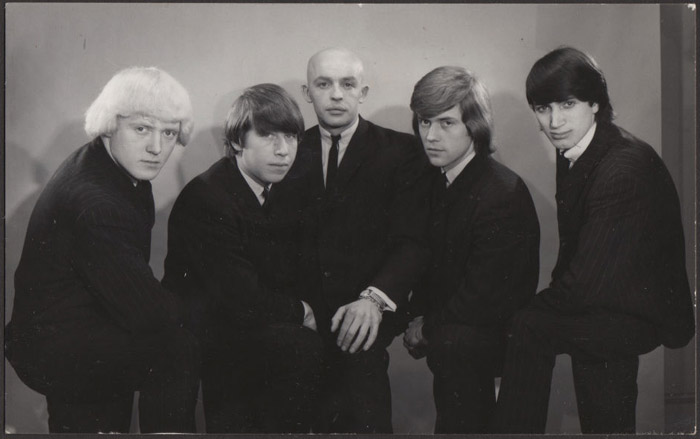

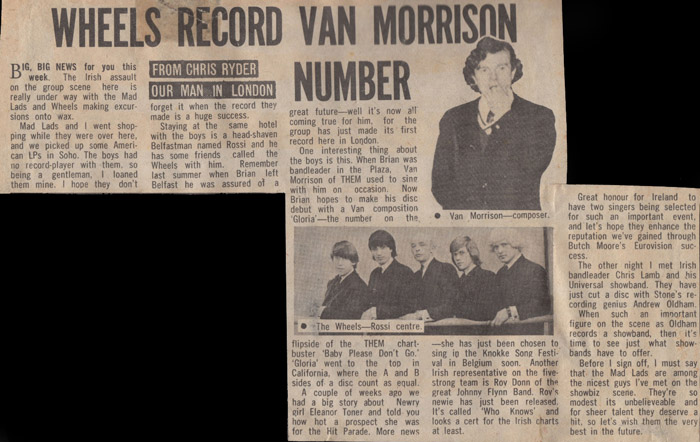

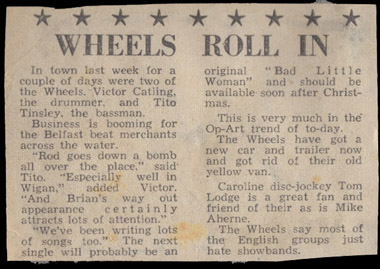
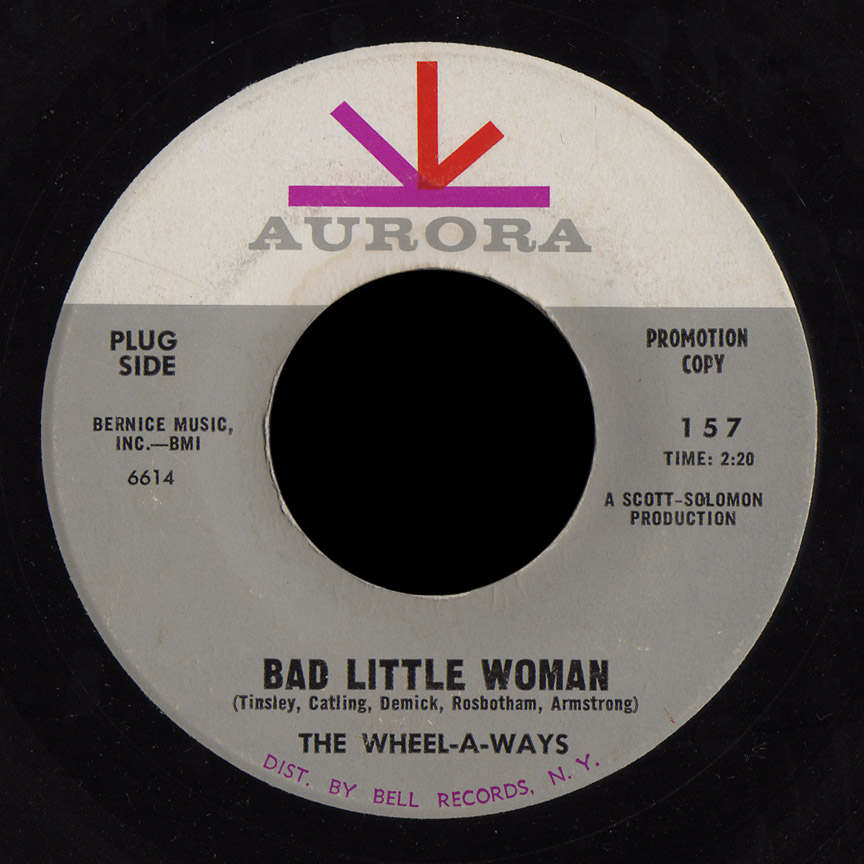


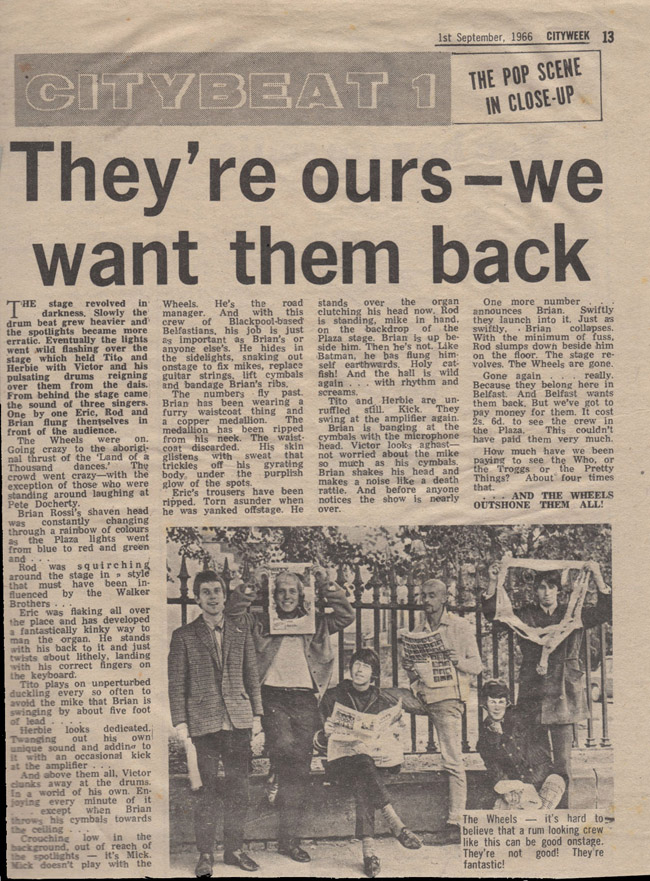
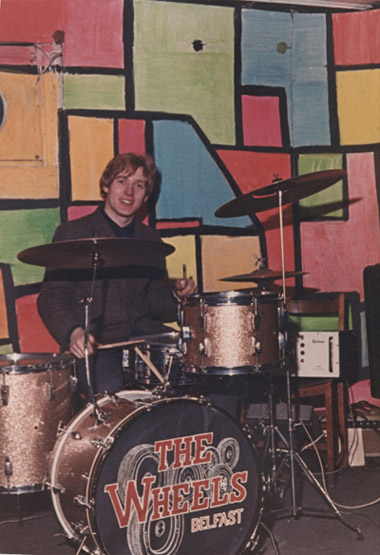
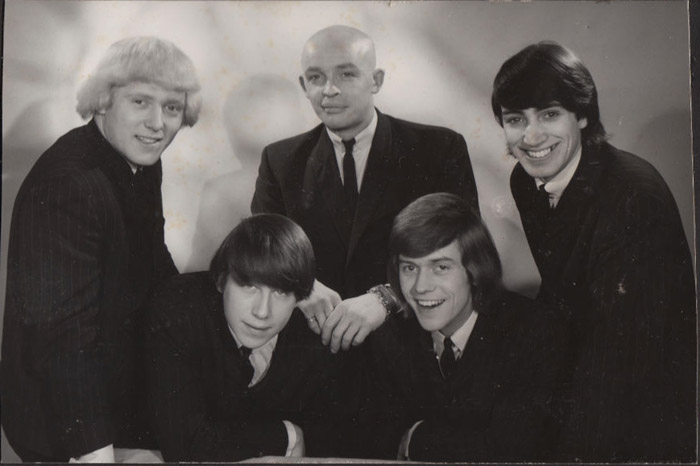
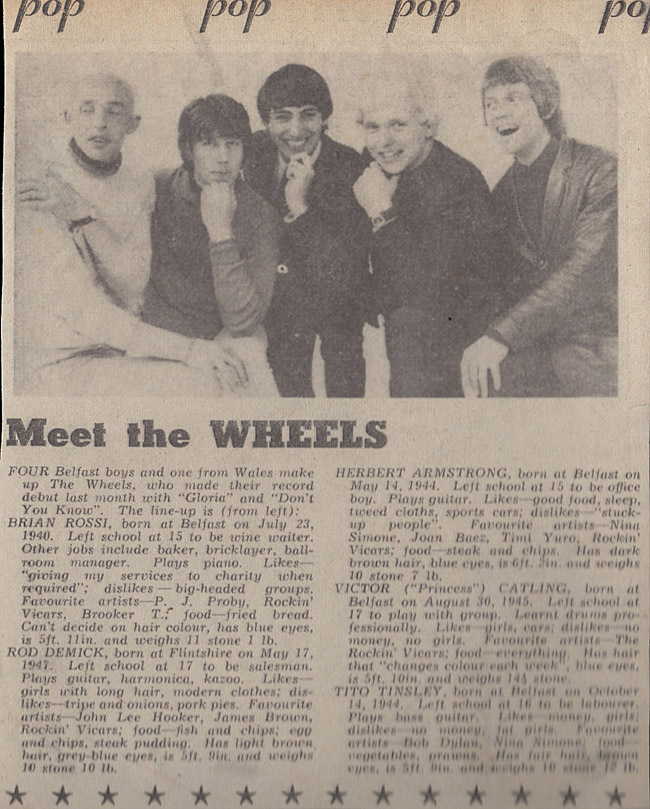


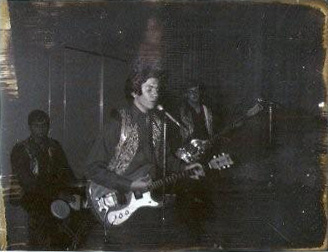

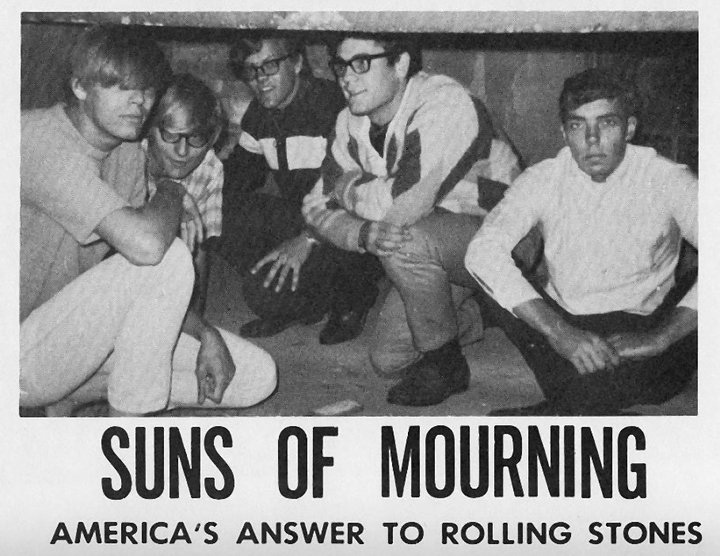


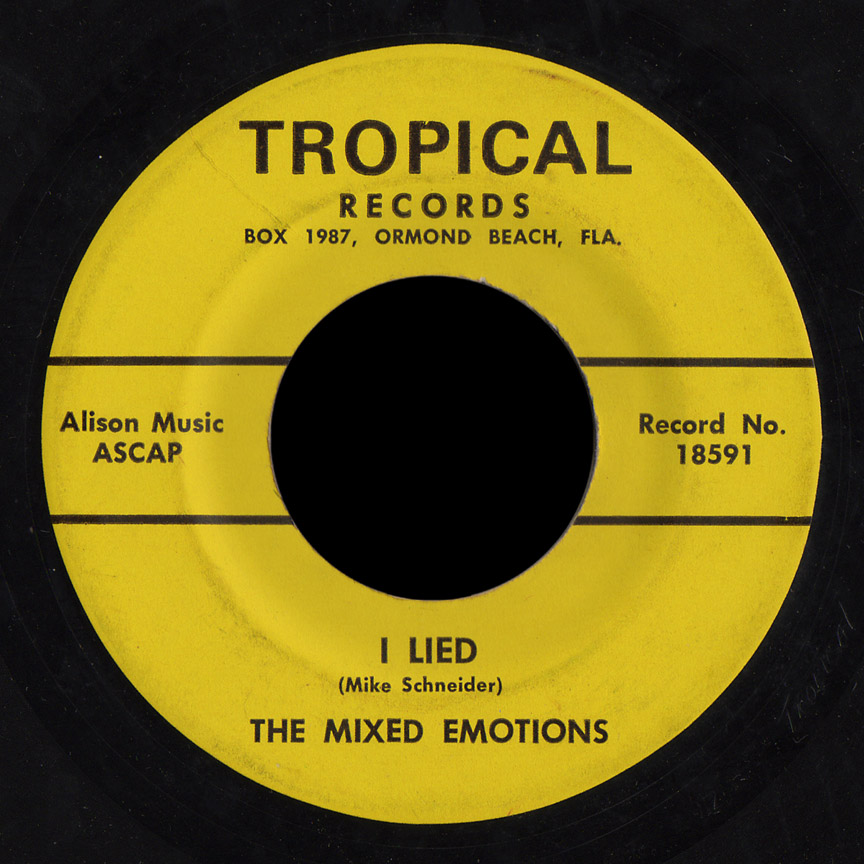 The Mixed Emotions give us two beautiful downers on their only release. The songs are similar in style but each is a gem of moody garage, especially “I Lied” which is all regret and a plea for forgiveness.
The Mixed Emotions give us two beautiful downers on their only release. The songs are similar in style but each is a gem of moody garage, especially “I Lied” which is all regret and a plea for forgiveness.
